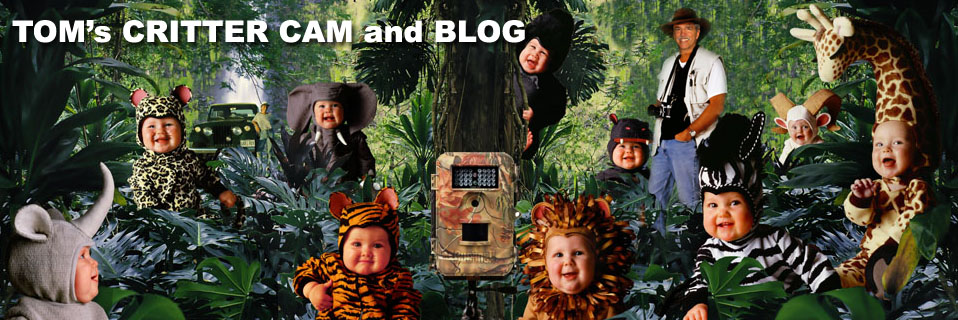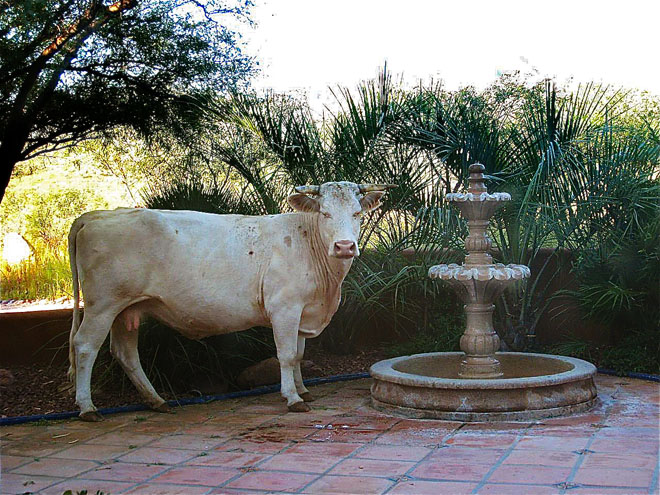Fountain Fauna
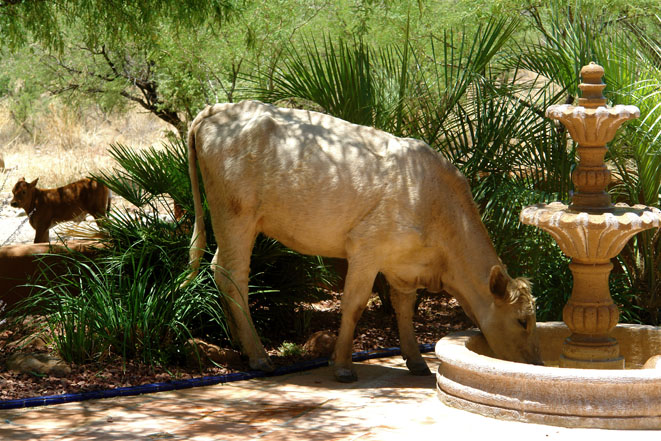
Here in southern Arizona we have what they call “open range”. This means, if you don’t fence your land you are liable to have a 1000 lb. cow staring at you through your office window like this one. Or like the mother and calf below. This pair came almost every day for a month last drought which you can count on like clockwork in the Sonoran Desert. Spanish settlers began raising cattle in the late 1600’s near the headwaters of the Santa Cruz River which still flows some 3 miles or so from me.
After the Gadsden Purchase, when the US purchased a very large tract of land from Mexico, cattle ranching started in earnest. Herds peaked in 1918 to some 1.75 million to a bit over a million, give or take a few today.
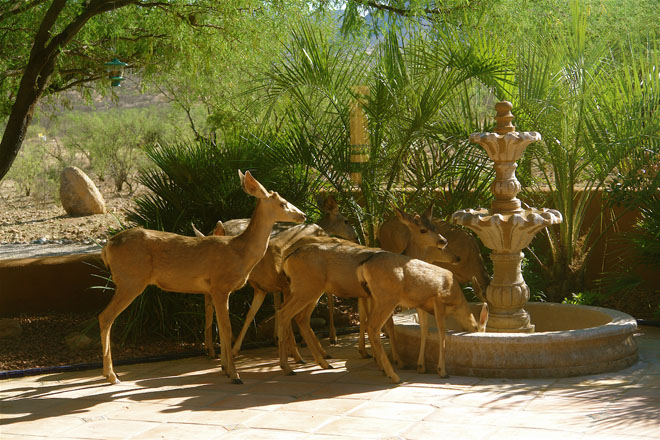
These mule deer (Odocoileus hemionus) can be found throughout the desert regions as long as there is enough browse for them to eat. When there isn’t they come and eat whatever flowers and plants they can digest in my courtyard and have a pit stop at my fountain too. Interestingly mule deer have no upper teeth, but just a hard palate. This little herd came and went for a couple of weeks before moving on. It is such a perk to look up from my desk and be treated to a scene like this.
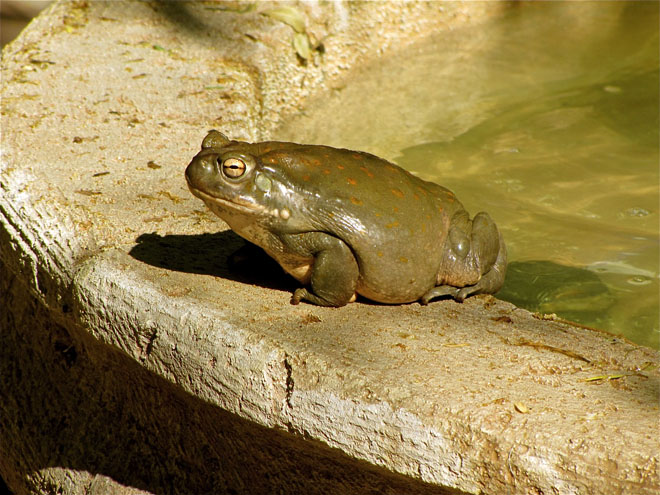
The first time I looked out and saw this big fat Sonoran Desert toad (Bufo alvarius) on the edge of the fountain I could hardly believe my eyes! These carnivorous and venomous toads are usually nocturnal, but search out small rain pools to breed. I’m not sure what he was doing in my fountain but he did stay there for a couple of days before disappearing.
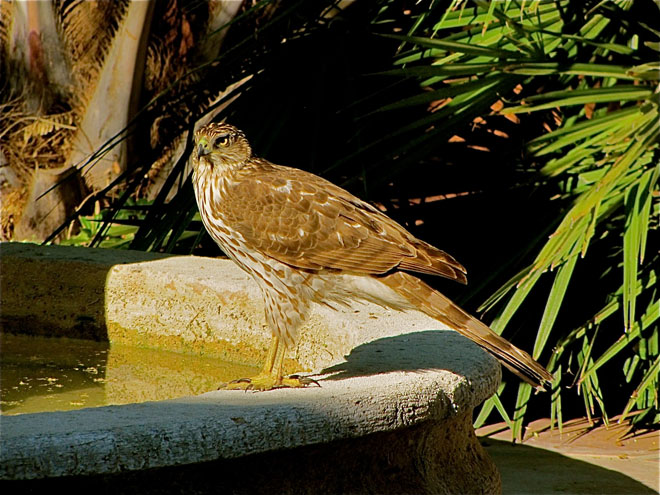
This medium sized Cooper’s hawk has been hunting around here for weeks.This raptor is known for its acrobatic flying patterns. These nimble birds feed on song birds and small rodents, and like most desert creatures, will visit a watering hole whether man-made or not.
